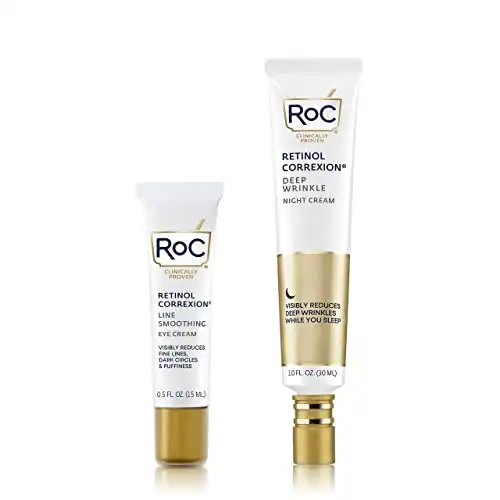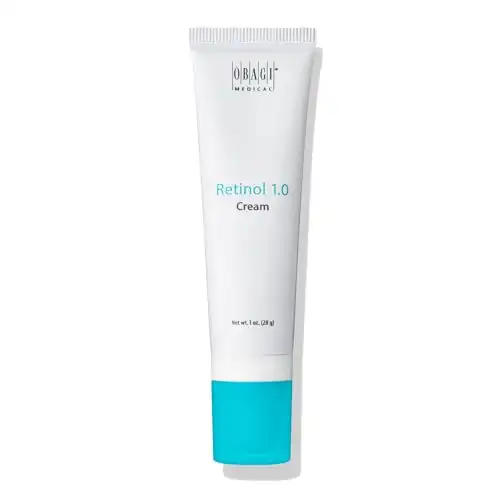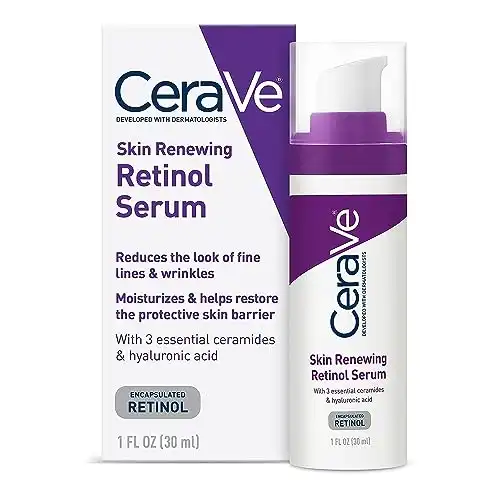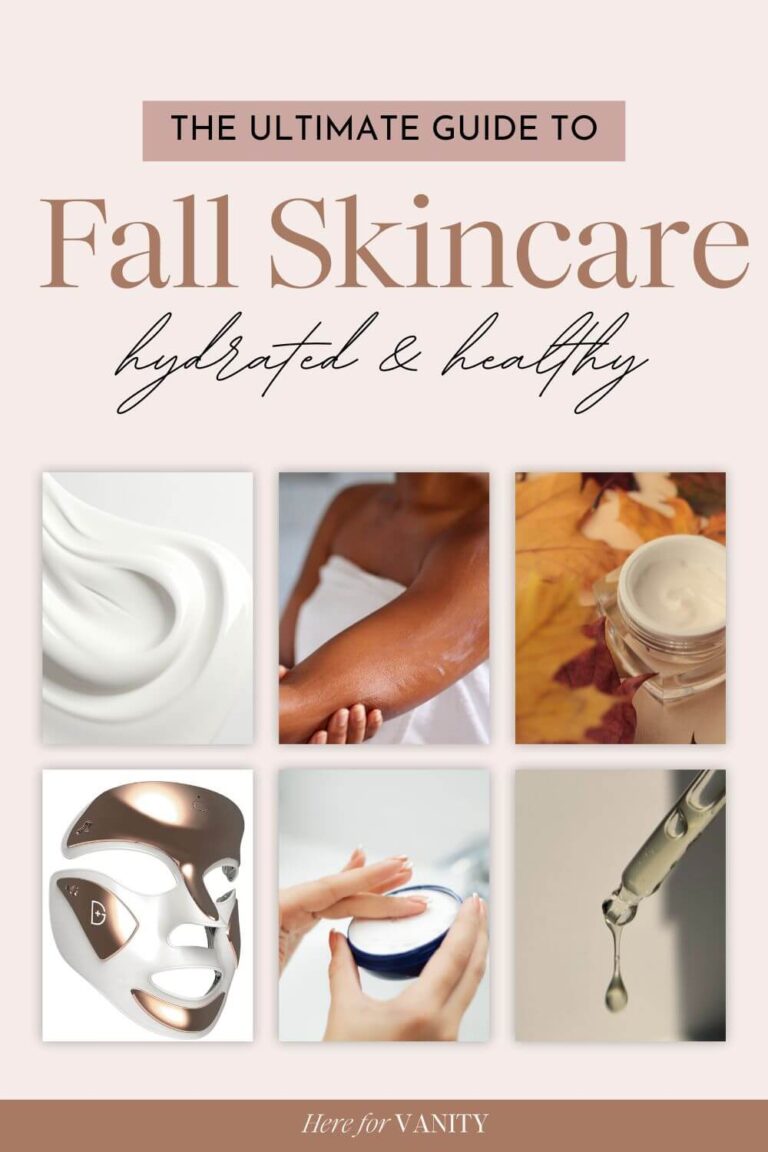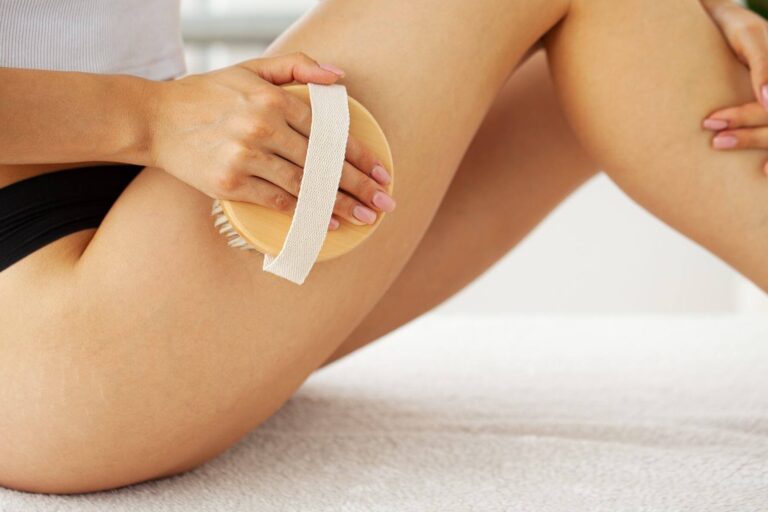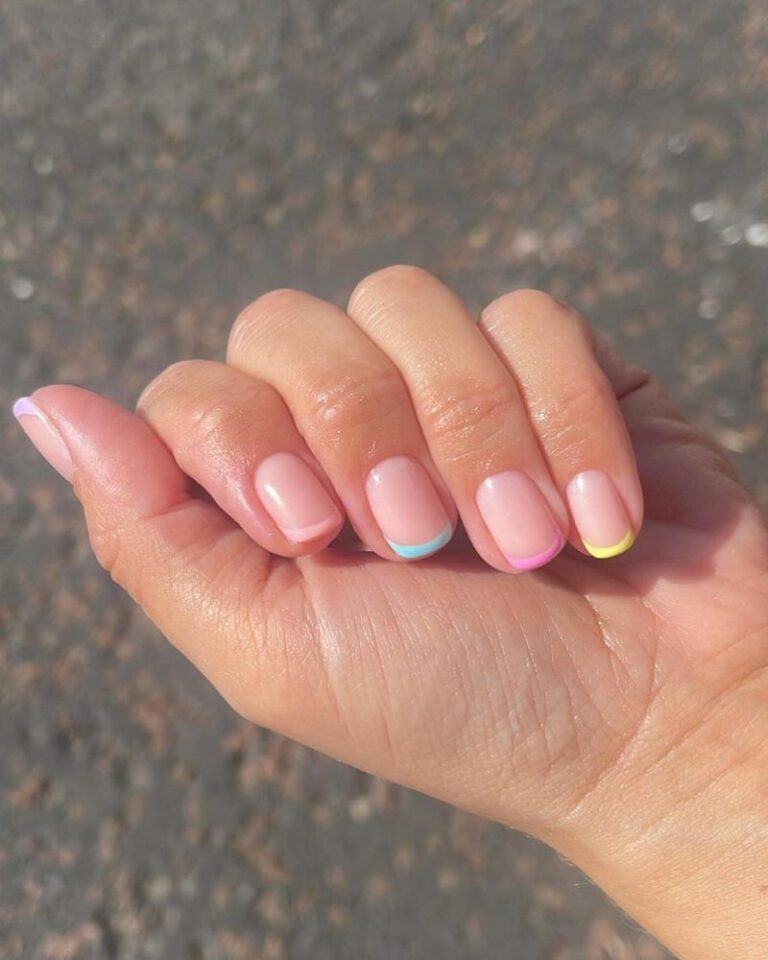The Tretinoin Skincare Routine Proven To Make Your Skin Glow
Starting a tretinoin skincare routine can feel like diving into uncharted waters. I’ve been there. It took me a while to finally get a good tretinoin routine down. I started retinoids at 35 years old and it took me nearly 5 years (!) to find what worked for my skin.
I’ll guide you through the basic and share everything I learned along the way. You’ll learn how to use it, about side effects, and the best routine. It will make your skin glowy without irritation.
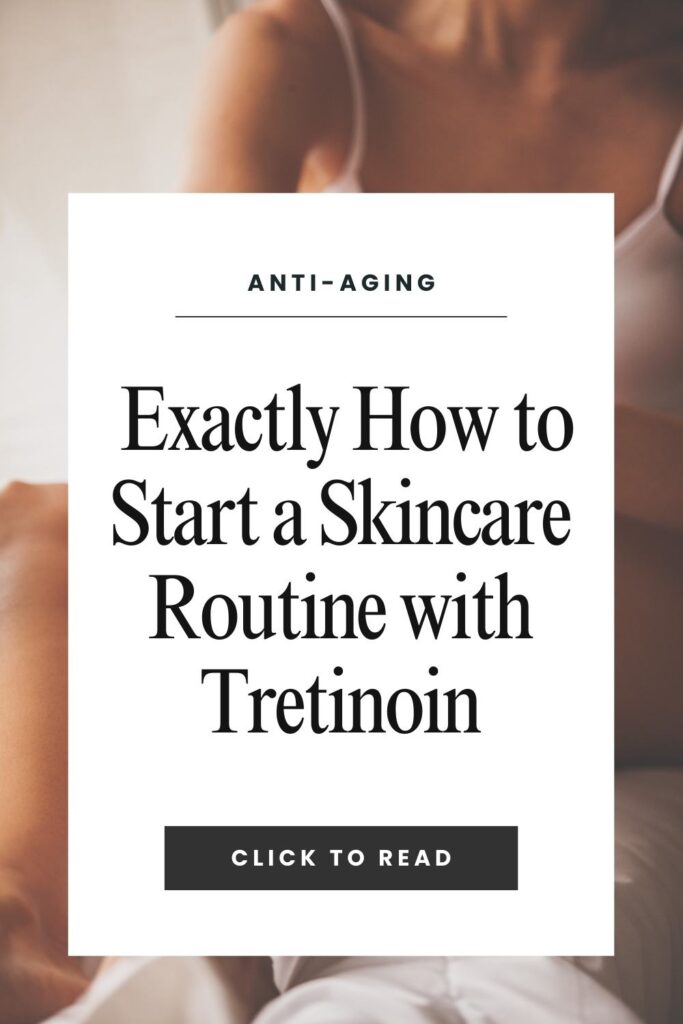
This post may contain affiliate links. This means I may earn a small commission if you purchase a product through my link at no extra cost to you. All items are carefully curated by me and reflect my honest opinion.
What is Tretinoin and How Does it Work?
Tretinoin is like the anti-aging superhero of skincare ingredients!
It’s a powerful form of vitamin A that works wonders for your skin by speeding up the turnover of skin cells.
This turnover not only helps smooth out wrinkles and fade dark spots, but also gives your skin a more even tone and texture.
Plus, it’s like a boost for elastin and collagen production, making your skin firmer and more youthful.
What’s the Difference Between Tretinoin and Retinol?
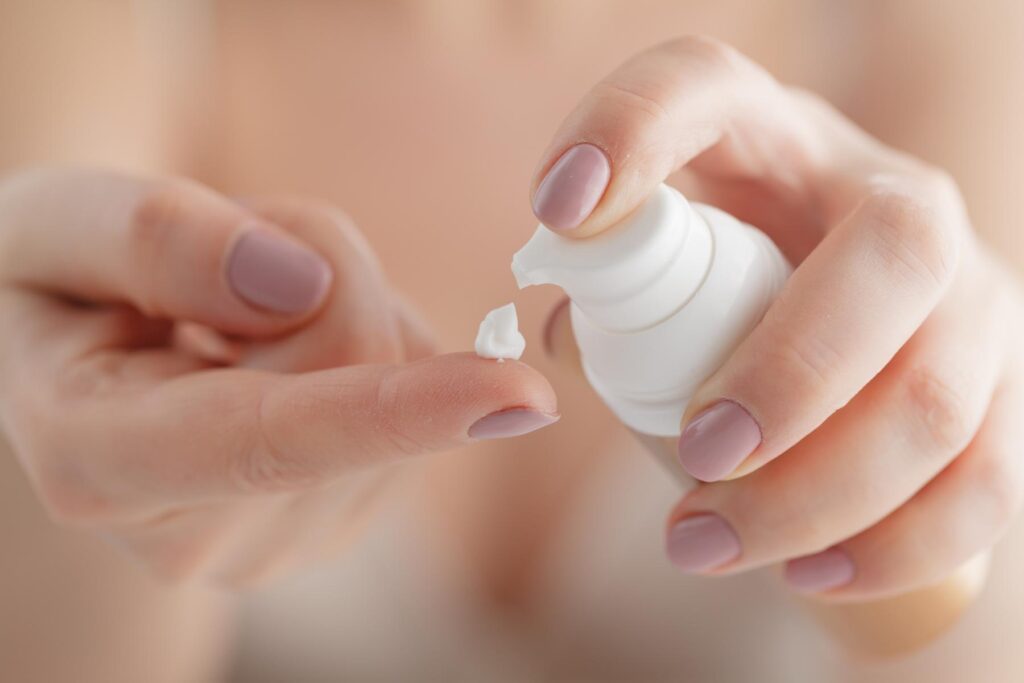
Tretinoin is the stronger, prescription-strength version of vitamin A, while retinol is available over the counter.
They both work by speeding up cell turnover and boosting collagen, but tretinoin packs a bigger punch.
It’s more effective at treating acne, fine lines, and hyperpigmentation, but it can also be more irritating, especially at first.
Retinol, on the other hand, is gentler and better suited for beginners or those with sensitive skin.
Many hail tretinoin as the gold standard, but retinol is a great option if you have sensitive skin or lack access to tretinoin.
Personally, I alternate between prescription tretinoin and the ROC retinol cream.
Related: 11 of the Highest Rated Drugstore Retinol Products of 2024
What Are the Skin Benefits of Tretinoin?
Topical tretinoin has been proven effective for skin aging and other skin concerns.
Some of the best benefits:
Tretinoin Reduces Dark Spots
Tretinoin targets hyperpigmentation, helping to fade sun spots and dark spots caused by sun damage, acne scars, or melasma.
Tretinoin Builds Collagen
Tretinoin has been shown to build collagen. It helps to improve skin elasticity, firmness, and texture which reduces the appearance of wrinkles and lines.
Tretinoin Reduces Acne
Tretinoin unclogs pores, reduces inflammation, and regulates skin cell turnover, making it an effective treatment for acne and preventing future breakouts.
Tretinoin Treats Fine Lines & Wrinkles
Tretinoin promotes the shedding of dead skin cells and encourages the growth of new ones, resulting in smoother skin and diminished fine lines and wrinkles over time.
Tretinoin Improves Skin Texture
Because tretinoin increases the skin’s cell turnover more, it’s great at improving skin tone and reducing rough skin or skin texture.
Who Is A Good Candidate for Tretinoin?
Almost everyone (unless you’re pregnant).
There is no specific age requirement for using tretinoin. But, it’s usually recommended for adults who have acne, signs of aging (like fine lines and wrinkles), or hyperpigmentation.
If your goal is anti-aging or reversing the signs of aging, Tretinoin is the gold standard.
Tretinoin Side Effects
- Skin Irritation: Tretinoin can cause redness, flaky skin, and irritation, especially during the initial stages of use.
- Increased Sun Sensitivity: Tretinoin makes your skin more sensitive to the sun so wearing daily sun protection is important.
- Purging Phase: It’s not uncommon to experience acne or breakouts when starting tretinoin, known as a “purging” phase, before seeing improvement.
Is Tretinoin Safe To Use?
Yes.
Researchers have looked extensively at topical retinoids for their anti-aging benefits. Research shows that, when used correctly, tretinoin is effective and has few side effects.
Of course, use tretinoin as directed and take steps to reduce potential side effects such as irritation and sun sensitivity.
Is Tretinoin Going to Ruin My Skin Barrier?
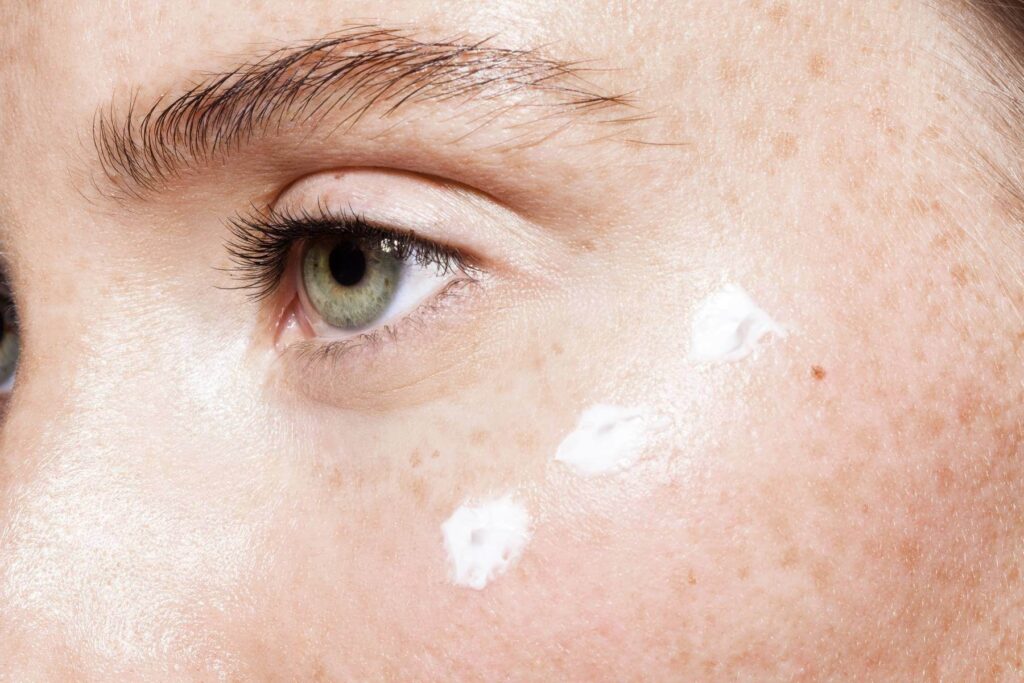
Tretinoin has stirred up some debate because it can be a bit tough on the skin barrier, causing dryness and irritation for some.
That’s why some experts suggest checking out retinaldehyde—it’s like a milder alternative that still gets the job done without irritation. In fact, studies have proven the effectiveness of retinaldehyde:
“The effect of 0.05% retinaldehyde in 32 female volunteers showing symptoms of mild to moderate photoaging. At the end of 4 months, a considerable reduction in the surface roughness and coarse wrinkling was observed. Moreover, retinaldehyde treatment was associated with very few adverse effects.” Source
There are other ways you can reduce irritation, too (more on that later).
But, as always, consult with a skincare pro to figure out what’s best for your skin.
How Long Does it Take to See Results?
For anti-aging, expect to see results after at least six months of consistent Tretinoin or Retinol use. For acne treatment, you may see results in as little as two months.
Getting the Right Tretinoin Prescription for You
Did you know that you can customize your Tretinoin? My dermatologist prescribed a very low dose (.25%) of hyaluronic acid and niacinamide.
Even with that lower concentration and moisturizing ingredients, I still get skin dryness a couple of days after using it. So, starting with a low concentration and working up might be worth it.
Creating a Skincare Routine With Tretinoin for Glowing Skin
If you’re new to tretinoin, it’s important to start slow. Here’s a step-by-step evening tretinoin skincare routine to get started.
- Cleanse: Cleanse normally with a mild cleanser to remove dirt, oil, or makeup. Rinse thoroughly with lukewarm water and pat your skin dry with a clean towel. Wait for your skin to dry completely, about 10-15 minutes (this is important)!
- Apply Moisturizer: A moisturizer will create a protective barrier and minimize irritation. Choose a moisturizer suitable for your skin type and apply a small amount evenly across your face and neck.
- Apply Tretinoin Cream: Use a pea-sized amount of tretinoin on your fingertips. Dot the product onto your forehead, cheeks, chin, and nose. Then, use your fingertips to spread it evenly over your entire face, avoiding the eye area and lips. Start using tretinoin only two to three times a week, gradually increasing frequency as your skin tolerates it.
- Wait: Allow the tretinoin to absorb into your skin for at least 20-30 minutes before applying other products. This waiting period helps minimize potential irritation and ensures the Tretinoin is fully absorbed.
Nighttime Skin Cycling with Tretinoin
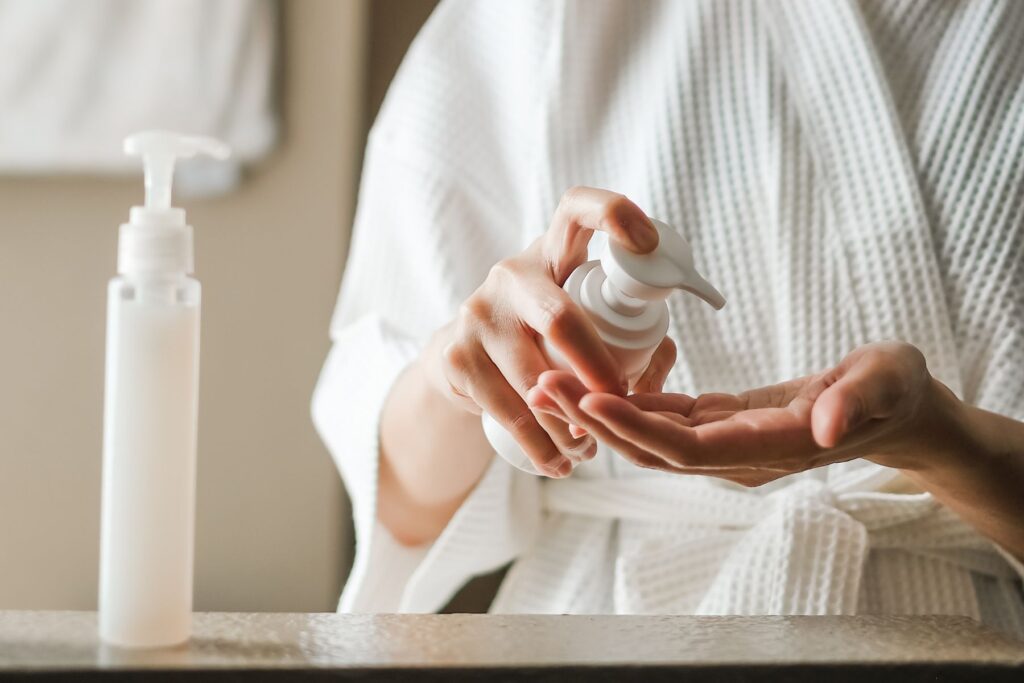
For best results, I like the slow, skin cycling approach with Tretinoin.
Skin cycling means using tretinoin every other day. On the other days, use gentle products like moisturizers, acids, or nothing.
This method helps to reduce irritation and is especially helpful for sensitive skin.
Plus, it allows you to incorporate other actives into your routine without causing irritation.
Monday: Tretinoin day
Tuesday: Moisturizer only day
Wednesday: Acid day
Thursday: Tretinoin day
Friday: Moisturizer only day
Saturday: Acid day
Related: The Ultimate Skincare Essentials List For Women Over 40
Do’s and Don’ts When Using Tretinoin
Here are a few top tips and reminders when introducing tretinoin!
DO Start Tretinoin Slowly and Increase Usage Over Time
Gradually introducing tretinoin helps your skin adapt. It reduces the risk of irritation and lets you transition to regular use more smoothly.
DO Use Tretinoin at Night
Tretinoin breaks down in sunlight, so applying it at night ensures maximum potency and minimizes the risk of sun sensitivity.
DO Wear Broad-Spectrum SPF Daily
Tretinoin increases skin sensitivity to UV radiation. This makes daily sunscreen crucial because it protects against sun damage and prevents premature aging.
DO Create a Buffer with Moisturizer, if Needed
Moisturizer hydrates and protects the skin barrier, reducing irritation and dryness from tretinoin use.
DO Be Patient
Tretinoin takes time to see results, as it works by gradually renewing the skin from within.
DO Consider Over-the-Counter Retinol:
There are great retinol products on the market that can be used if you don’t have access to Tretinoin OR can’t tolerate tretinoin.
DON’T Use Other Active Ingredients with Tretinoin
Combining tretinoin with other actives, such as benzoyl peroxide, salicylic acid, glycolic acid, etc., can irritate the skin and harm the skin barrier.
DON’T Apply Tretinoin to Wet or Damp Skin
Tretinoin can penetrate wet or damp skin more deeply, increasing the risk of irritation and sensitivity. Dry skin helps minimize irritation.
DON’T Forget to Apply Tretinoin to Your Neck, Décolleté, and Hands
These areas are prone to signs of aging and can benefit from tretinoin’s effects on collagen production and skin cell turnover, ensuring a more uniform and youthful appearance.
Best Retinol Products
A medical provider must prescribe Tretinoin. But, you can still get great results with over-the-counter retinol derivatives.
Here are a few of the best retinol products that you can purchase on Amazon:
See more of the best drugstore retinol products in this post.
Incorporating Tretinoin Into Your Skincare Routine for Long-Term Results
Consistency is key when it comes to tretinoin and retinol use.
With consistent use 3+ times a week, tretinoin can reduce signs of aging and skin problems, including fine lines/wrinkles, dark spots, and laxity.
As always, get professional medical advice before starting your tretinoin journey!
Pin This Article for Later:


